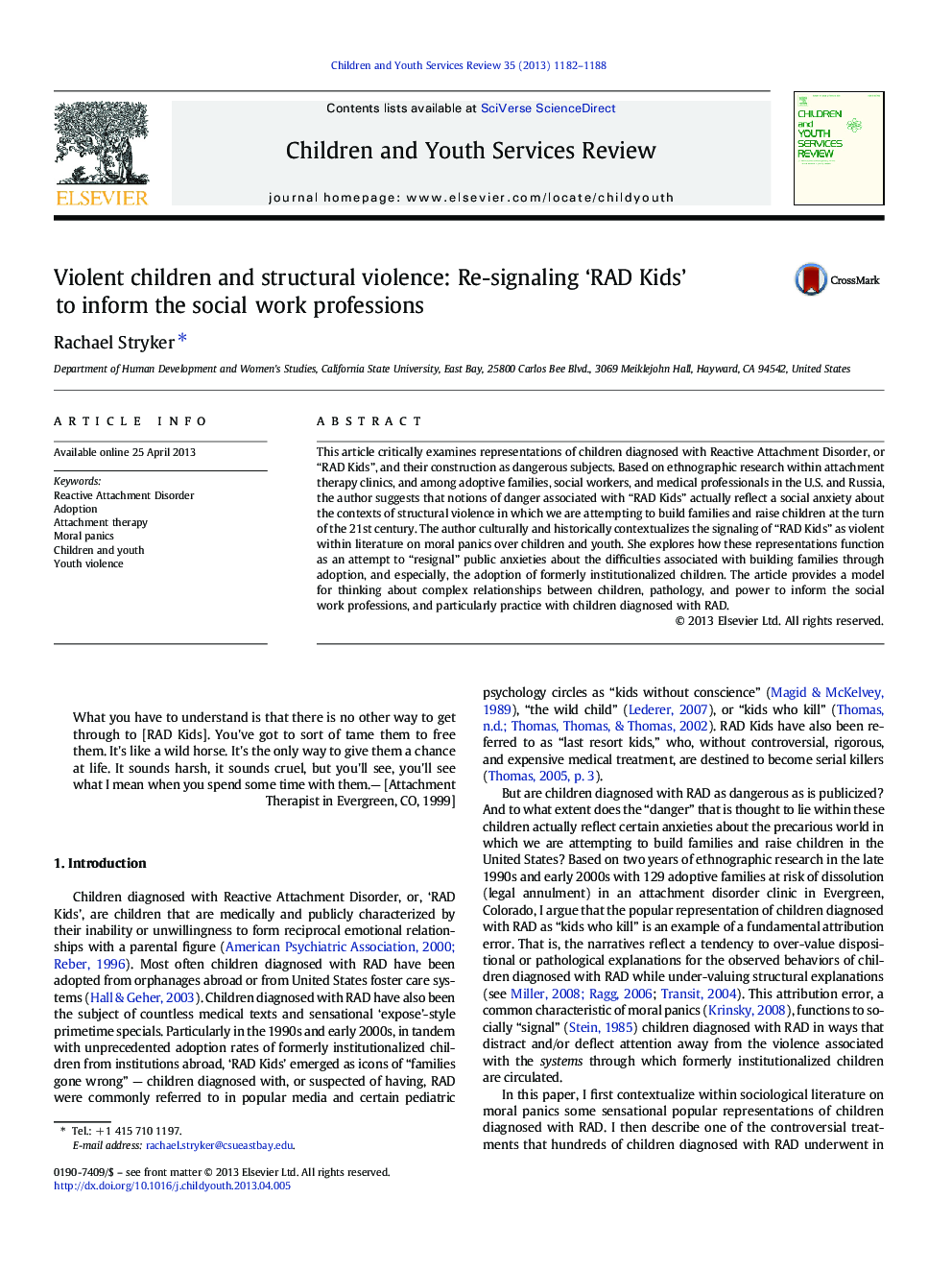| Article ID | Journal | Published Year | Pages | File Type |
|---|---|---|---|---|
| 346277 | Children and Youth Services Review | 2013 | 7 Pages |
•Pathologizing children is a consistent element of moral panics about youth.•Some forms of RAD treatment overstate links between ‘RAD Kids’ and violent behavior.•Structural violence and its impact on children are cause for social worker concerns.•Understanding ‘RAD Kids’ perspectives on treatment may improve interventions.
This article critically examines representations of children diagnosed with Reactive Attachment Disorder, or “RAD Kids”, and their construction as dangerous subjects. Based on ethnographic research within attachment therapy clinics, and among adoptive families, social workers, and medical professionals in the U.S. and Russia, the author suggests that notions of danger associated with “RAD Kids” actually reflect a social anxiety about the contexts of structural violence in which we are attempting to build families and raise children at the turn of the 21st century. The author culturally and historically contextualizes the signaling of “RAD Kids” as violent within literature on moral panics over children and youth. She explores how these representations function as an attempt to “resignal” public anxieties about the difficulties associated with building families through adoption, and especially, the adoption of formerly institutionalized children. The article provides a model for thinking about complex relationships between children, pathology, and power to inform the social work professions, and particularly practice with children diagnosed with RAD.
